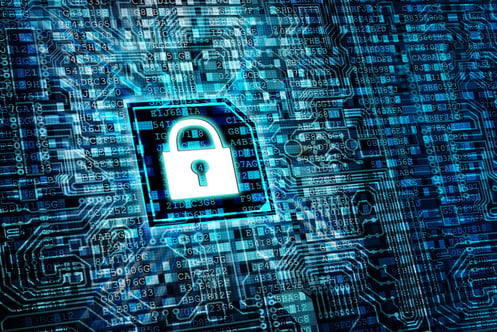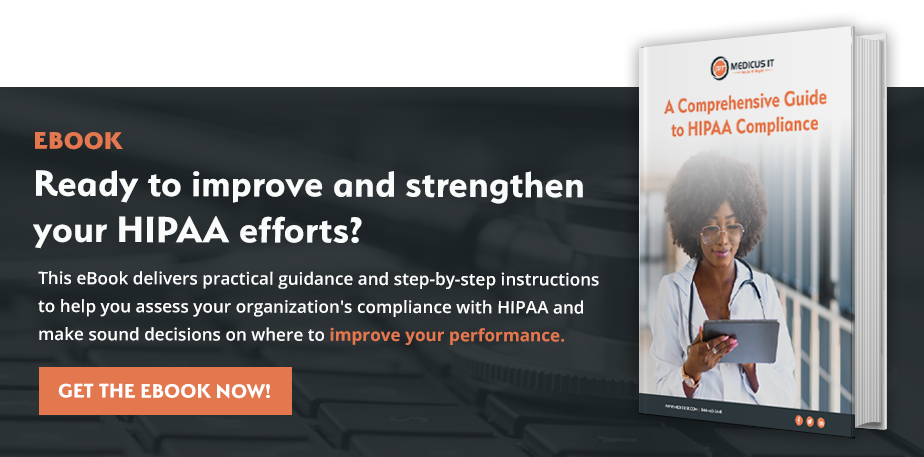
Staying HIPAA compliant is easier said than done. In your organization, you must manage many moving parts, so things can fall through the cracks if HIPAA and IT security are not top of mind for all employees. Here are seven ways you can make HIPAA and IT security more of a priority in your organization.
1. Create and Deploy IT Policies and Procedures
By developing and enforcing standardized IT policies and procedures, you highlight the importance of HIPAA compliance to everyone in the organization. Start by understanding regulatory requirements and setting business risk management goals. Then, design an outline and determine the specific policies required by your organization to remain compliant.
Document all of your policies and procedures, including a response plan that details the steps to take when a breach occurs. Develop a review-revise-approve-communication process, establish a maintenance plan, and appoint a privacy and security officer to ensure ongoing adherence to the policies.
2. Provide Staff Training on HIPAA and IT Security Protocols
Your ability to stay HIPAA compliant is only as good as how well staff follows your IT security policies. Security awareness is essential. All employees must receive training on HIPAA privacy and security rules. They should understand their responsibilities to maintain HIPAA standards, know how to identify cyberthreats (e.g., phishing emails,) and be prepared to respond when a threat — even a potential one — is discovered.
Failure to provide training is a HIPAA violation. All the training must be documented and signed by each staff member to confirm that they have received and reviewed the materials. Besides a comprehensive onboarding process, you should also provide ongoing education to ensure that HIPAA and IT security stay top of mind.
3. Implement Data Encryption
Nearly two-thirds of all significant breaches involving electronic protected health information (ePHI) are caused by lost or stolen devices containing unencrypted health information. In fact, HIPAA requires healthcare organizations to use data encryption technology to protect sensitive patient information.
Take inventory of all the systems that store or transmit patient data and identify those that aren't protected by encryption. Inquire if the software vendors provide updates with encryption capabilities and ensure that any software you install in the future has the proper security control. Also, protect your encryption keys by storing them away from patient data using key management servers.
4. Configure Network and Software Correctly
The wrong network or software settings give malicious actors a better opportunity to breach your systems and steal ePHI. Work with IT security experts with HIPAA experience to ensure that your systems are set up to prioritize HIPAA and IT security and minimize breaches caused by human errors or oversight.
Also, strengthen endpoint security by enforcing strong passwords and authentication requirements for all applications and devices. One way is by implementing two-factor authentication, also known as multi-factor authentication, 2FA, and two-step verification. As a Healthcare Services Team blog notes, "For any system that stores or provides access to your organization's sensitive and protected health data, work to ensure two-factor authentication is required for users. Also, ensure it is not possible to disable two-factor authentication on these systems. If you believe any of your systems are lacking two-factor authentication where it would be helpful in strengthening data security, speak with your managed services provider or system vendors about your options for activating two-factor authentication."
To address the proliferation of mobile devices, implement strict policies on the use of portable electronic devices. Provide employees with the appropriate support to ensure that their devices are configured properly.
5. Implement Administrative, Physical, and Technical Safeguards
Administrative safeguards involve the implementation of procedures to demonstrate HIPAA compliance. They should help mitigate management oversight, provide evidence of an ongoing training program, and include a proven contingency plan to handle emergencies. You should also only use technology vendors that will enter into a business associate agreement and explain the process, policies, and procedures they use to maintain data security.
Physical safeguards protect the physical process of handling sensitive data. They include the monitoring and proper disposal of devices that are used to process PHI, a facility security plan, and procedures to ensure that only authorized individuals can access your hardware and software.
Technical safeguards prevent electronic communications from being intercepted by outside parties. For example, they help ensure that data isn't tampered with and all your systems with PHI are as secure as possible to help prevent intrusion. You also need IT documentation on network configuration settings to demonstrate adherence to HIPAA standards.
6. Conduct a Risk Assessment
A risk assessment helps you identify where your HIPAA and IT security measures need improvements to better ensure compliance. A comprehensive auditing and compliance assessment should include a vulnerability assessment, security risk assessment, business impact analysis, penetration testing, policy development, incident response, and remediation planning.
The assessment gives you the information you need to prepare for HIPAA compliance audits, which track progress on compliance and identify areas where improvement is needed. Undergoing an assessment and addressing problems can help you avoid HIPAA violations and expensive fines.
7. Maintain an Audit Log
An audit log helps you prioritize HIPAA and IT security by giving you visibility into all the activities in your network. You can also analyze the data in your access and event logs to identify patterns and detect suspicious activities as soon as they occur to minimize damage associated with breaches.
An audit log should record when your employees log in, failed login attempts, details of the latest software updates, what new programs have been downloaded, when passwords were changed, who accessed your electronic health records system and when it was viewed, as well as what PHI is changed and by whom.
The Foundation of HIPAA Compliance
Staying HIPAA compliant can be challenging for many healthcare providers. For example, some overlook the use of mobile devices by their staff, while others neglect to implement the right encryption protocols for endpoint security.
Regular HIPAA security risk assessments can help you avoid these mistakes. They should be a key component in your IT strategy to better ensure that your organization is prioritizing HIPAA and IT security so you can comply with regulations.
Our HIPAA and IT security experts have put together a HIPAA Cyber Security Risk Assessment Checklist. Download the complimentary resource today to make sure you have everything covered.

